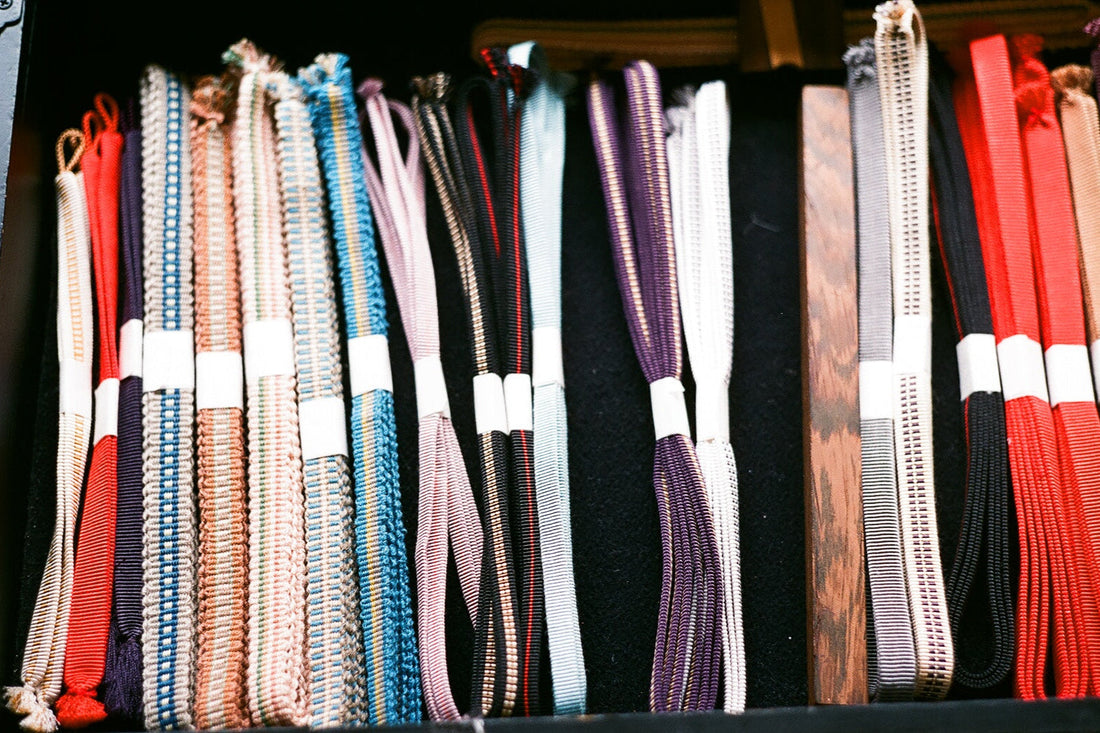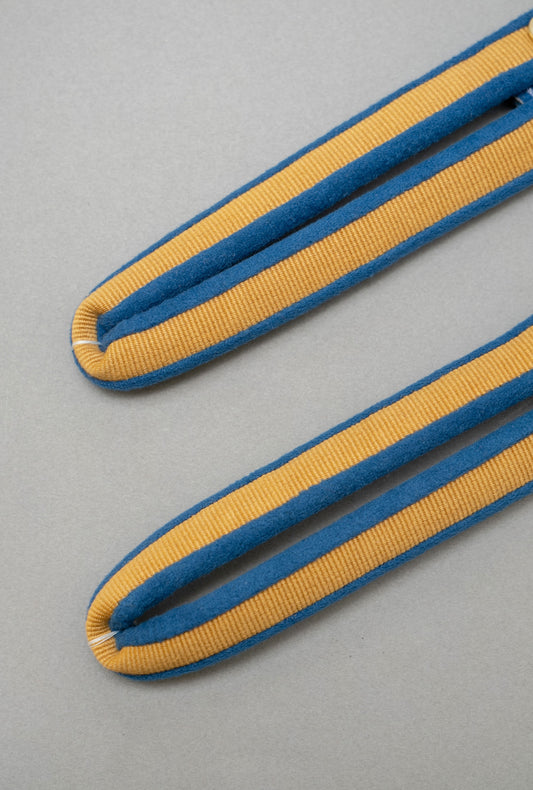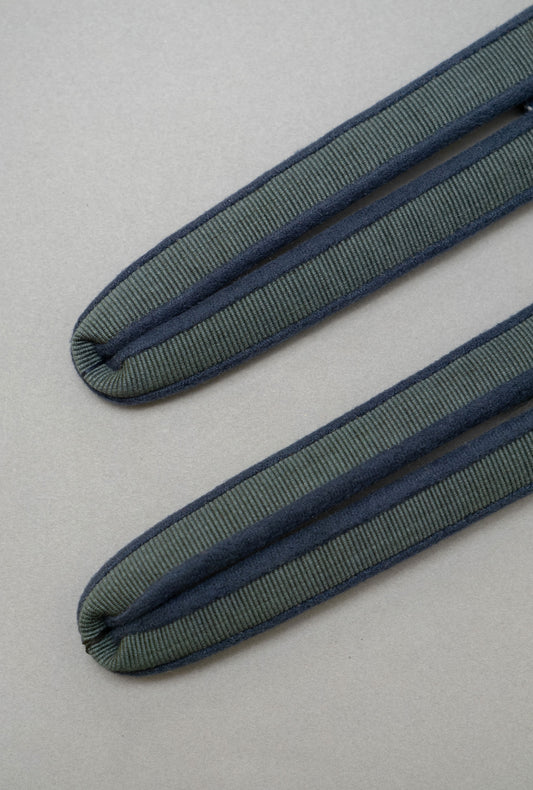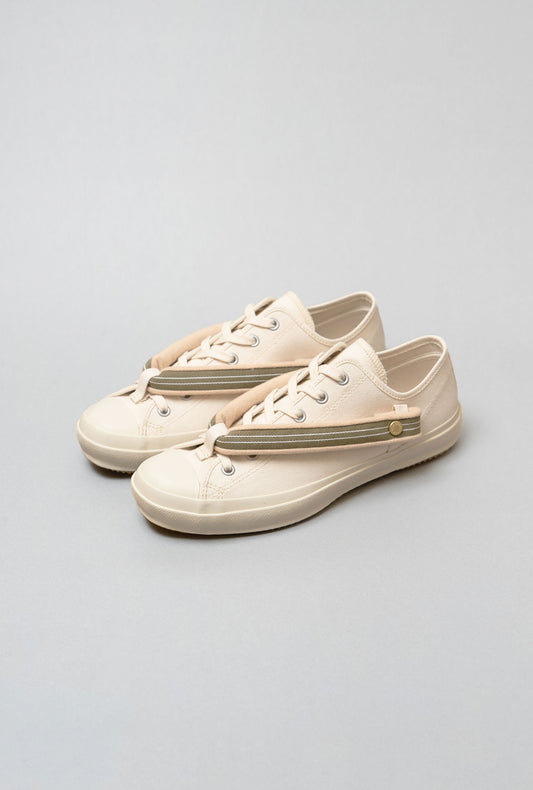
Sanada-himo Enami | sanada braid | 01
Share
#01 "Promise cord" is a secret code
In this episode, we talk about the last hand-woven Sanada-himo craftsman in Japan, Isao Wada san of "Sanada-himo Enami". Sanadahimo is a string full of secrets that acts like a certificate. At Sanada-himo Enami, Wada san and his wife, now in their 15th generation, do everything from setting the loom, to dyeing the threads, to weaving, to finishing, to setting the loom itself.

—What is the characteristic of "Sanada-himo"?
It is flat because it is woven with warp and weft yarns on a loom. There are two main weaving methods for Sanada-himo. The cotton "single weave" is used for slightly inexpensive items such as tea bowls and souvenirs. "Fukuro-ori" has a double-layer structure and is very strong, so it is used for high-value items such as works of art.
──I have never heard of “Sanada-himo” before. What kind of things is it used for?
It is mainly used for strings for paulownia boxes of tea ceremony utensils. Today, it is used for bag handles and camera strings, and its design and functionality are expanding. In the old days, every house had a set of strings with medicines, and they were used in daily life. It was useful for many things, such as wrapping around a tasuki (sash), a waistcoat, or snow geta . People use them in different ways, so I tell them, “Please use them as you like.

Can only weave about 5 meters in a day.
──Are there any other Sanada-himo craftsmen in Japan at present?
We are the only hand weavers in Japan.
──What kind of work do you do as a Sanada-himo weaver?
We do everything here, from dyeing the threads to the entire process (dyeing the threads, weaving them into cords, and processing them). A roll of hand-woven Sanada-himo is 78 meters long; weaving 100 meters of thread makes 78 meters. The loom we use is also handmade by my father. We also used to make furniture and utensils from wooden planks, so we repair the looms ourselves.

The Sanada-himo is a cord with many secrets.
──Sanada-himo is a cord with a code that reveals a person's affiliation and blood relationship with the person to whom it is tied. In "Enan," did you do both sanada-himo and sashimono?
I am the seventh generation of shimono and the 15th generation of sanada-himo. Sanada-himo was a backstage job. Because it was a very secretive business, I could not advertise that I was a sanada-himo shop, so for a while after I was the first generation, I had a sign as a sashi-mono maker. The shop was ostensibly a shimono shop, but if you went to the back of the dirt floor, you would see a sanada-himo weaver weaving.
──Why is that?
There is a type of Sanada-himo called "Yakusoku-himo," and each family has its own pattern. It serves as a kind of certificate, similar to a family crest. Each family has to make it differently in color, number of lines, thickness, and so on. A quick glance reveals the family's school, the craftsman who makes it, and the blood relationship between them. There is a lot of information in this Sanada-himo. Therefore, it was not allowed to say who made the cord and what pattern, and pattern books were not made because it would be very difficult if they were stolen. For this reason, we did not put up a signboard of Sanada-himo, but made it in a very small way. Many sanada-himo were more cryptic than design.
──Are the patterns different for each person?
Yes, every pattern is different. When I create a new pattern, I look back over the past 300 years (for which I have pattern books). In the past, there were many different types of looms and many more craftsmen than now, so the range of what we could do was wider, but now the patterns are narrower. So we try to increase the number of lines, make one line with two different colors of yarn, or adjust the colors by changing the number of times the yarn is dipped in the dye.
───Has anything changed over time?
The thinness of the cord has changed. I think Sanada-himo is something that represents the times. Sanada-himo is used for military industry in times of war, and for tea ceremonies and events in times of peace, so it is made according to the way it is used in different times. In the past, Sanada-himo was used as military equipment for battles and wars, so it was thicker than today. Nowadays, it is generally used for paulownia boxes, so it is thinner and each thread is also thinner. This makes it possible to create a detailed pattern.








